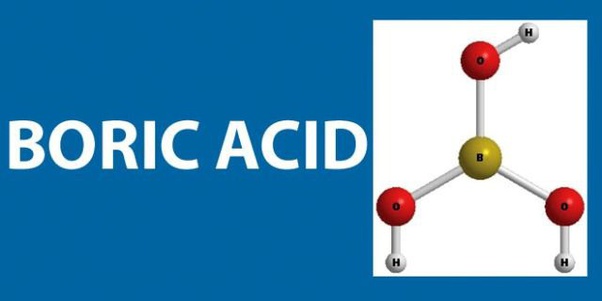Nitric acid and boric acid are both extremely important acids that have a wide spectrum of applications. While the former is a highly corrosive mineral acid, the latter is a weak monobasic acid which is the Lewis acid of boron. Some important properties and applications of nitric acid and boric acid are provided in this article.
Nitric Acid
Nitric acid, sometimes referred to as “spirit of niter” or “aqua fortis”, is an extremely corrosive mineral acid whose chemical formula is given by HNO3. In its pure form, nitric acid is known to be colorless. However, relatively old samples of nitric acid are known to develop a yellow cast (which is primarily a result of its decomposition into different oxides of nitrogen along with water). If a solution contains over 86% of nitric acid, it is generally called fuming nitric acid. Commercially, this compound is known to be available at a concentration of 68 % (dissolved in water).
Properties of Nitric Acid
- The molar mass of nitric acid is known to be equal to 63.012 grams per mole.
- Under standard conditions for temperature and pressure (often abbreviated to STP), this compound exists as a colorless liquid that gives out red or yellow fumes (based on its concentration).
- This compound is known to have a highly suffocating, acrid odor.
- The density of pure nitric acid is roughly equal to 1.51 grams per cubic centimeter. However, at a concentration of 68%, the density of this compound drops to 1.41 grams per cubic centimeter.
- The melting point of nitric acid is known to be equal to -42 degrees Celsius.
- The boiling point of pure nitric acid is 83 degrees Celsius. However, it must be noted that a 68% solution of nitric acid in water boils at a temperature of 121 degrees Celsius.

Applications of Nitric Acid
The primary application of nitric acid is in the production of fertilizers for the agriculture industry. This compound is also used in the production of explosives and in the preparation of certain special organic compounds. Nitric acid is also known to play a vital role in the production of nylon precursors.
Boric Acid
Boric acid, also known as orthoboric acid, boracic acid, and hydrogen borate, is a weak acid that is denoted by the chemical formula BH3O3. Some important properties and applications of this weak acid are listed in this subsection.
Also Read: GMAT exam date: prepare as per the suitable dates
Properties of Boric Acid
- The molar mass of boric acid is roughly equal to 61.83 grams per mole.
- Under standard conditions, this compound is known to exist as a white crystalline solid.
- The density associated with this compound corresponds to 1.435 grams per cubic centimeter.
- The melting and boiling points of boric acid lie at 170.9 degrees Celsius and 300 degrees Celsius respectively.
Applications of Boric Acid
The most important industrial application of boric acid lies in the manufacture of textile fiberglass. This compound is also used in the production of LCD flat panel display systems. In combination with borax, this compound can be used as a welding flux by blacksmiths.

